Papers by Virginie Sinet-Mathiot

Journal of Quaternary Science
Pleistocene faunal assemblages are often highly fragmented, hindering taxonomic identifications a... more Pleistocene faunal assemblages are often highly fragmented, hindering taxonomic identifications and interpretive potentials. In this paper, we apply four different methodologies to morphologically unidentifiable bone fragments from the Neanderthal open-air site of Salzgitter-Lebenstedt (Germany). First, we recorded zooarchaeological attributes for all 1362 unidentifiable bones recovered in 1977. Second, we applied zooarchaeology by mass spectrometry (ZooMS) to 761 fragments, and calculated glutamine deamidation values. Third, we assessed the collagen preservation of 30 fragments by near-infrared spectroscopy (NIR) and, finally, we pretreated 10 bones with high predicted collagen values for radiocarbon dating. All returned dates at, or beyond, the limit of radiocarbon dating, indicating an age of older than 51 000 years ago. The ZooMS faunal spectrum confirms a cold environment, dominated by reindeer, alongside mammoth, horse and bison. The low occurrence of carnivore modifications (1%) contrasts with an abundance of human modifications (23%). Cut marks and marrow fractures were observed across reindeer, horse and bison. The mammoth remains are less well preserved and show a lower degree of human modifications, indicating, perhaps, a different taphonomic history. Overall, this study illustrates the importance of retaining, studying and incorporating the unidentifiable bone fraction to optimize interpretations of site formation and subsistence behaviour at Palaeolithic sites.
Zenodo (CERN European Organization for Nuclear Research), Oct 19, 2022

Journal of Paleolithic Archaeology
The exact strategies and technologies underlying Neanderthal hunting events remain open for debat... more The exact strategies and technologies underlying Neanderthal hunting events remain open for debate with lithic points being sparse across the European Middle Palaeolithic. An exception is the Neronian entity in southeast France, defined by ventrally retouched Soyons points. This study contextualises one of the largest Neronian assemblages, layer 1 at Abri du Maras. Our lithic analyses focussed on attributes described as indicative of projectile use or hafting to contextualise the morphometric and technological characteristics of the pointed implements at an assemblage level. We found that retouched points were made on a variety of blank types (including Levallois, laminar and discoidal flaking techniques) and ventral retouch is present across different artefact types (including points, scrapers and denticulates). Next, these lithic data were compared to similar typo-technological data recorded on a sample from the recently excavated and well-contextualised point-rich layer 4.1 of Ab...
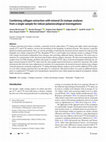
Archaeological and Anthropological Sciences
Collagen extraction from bones or dentine, commonly used for radiocarbon (14C) dating and stable ... more Collagen extraction from bones or dentine, commonly used for radiocarbon (14C) dating and stable carbon and nitrogen isotope (δ13C and δ15N) analyses, involves the dissolution of the bioapatite of skeletal elements. This fraction is typically disposed of during pretreatment. Here, we test the possibility of utilising this dissolved mineral solution for analysis of the bioapatite zinc isotope composition (δ66Zn). Bioapatite δ66Zn is a novel trophic level indicator similar to collagen δ15N but with isotopic fractionation independent from nitrogen, thus providing additional dietary information. We tested ways to minimise Zn contamination of the dissolved mineral phase during collagen extraction. We then used archaeological bone samples from Ain Difla (Jordan) and Ranis (Germany) to compare δ66Zn values of dissolved bioapatite following our collagen extraction protocol with δ66Zn values from the same sample material dissolved in a metal-free cleanroom. Our results demonstrate that with ...

Journal of Human Evolution
The expansion of Homo sapiens and our interaction with local environments, including the replacem... more The expansion of Homo sapiens and our interaction with local environments, including the replacement or absorption of local populations, is a key component in understanding the evolution of our species. Of special interest are artifacts made from hard animal tissues from layers at Bacho Kiro Cave (Bulgaria) that have been attributed to the Initial Upper Paleolithic. The Initial Upper Paleolithic is characterized by Levallois-like blade technologies that can cooccur with bone tools and ornaments and likely represents the dispersal of Homo sapiens into several regions throughout Eurasia starting by 45 ka or possibly earlier. Osseous artifacts from the Initial Upper Paleolithic are important components of this record and have the potential to contribute to our understanding of group interactions and population movements. Here, we present a zooarchaeological, technological, and functional analysis of the diverse and sizable osseous artifact collection from Bacho Kiro Cave. Animal raw material sources are consistent with taxa found within the faunal assemblage including cervids, large bovids, and cave bear. A variety of bone tool morphologies, both formal and informal, indicate a diverse technological approach for conducting various on-site activities, many of which were focused on the processing of animal skins, likely for cold weather clothing. Technological flexibility is also evident in the manufacture of personal ornaments, which were made primarily from carnivore teeth, especially cave bear, though herbivore teeth and small beads are also represented. The osseous artifacts from Bacho Kiro Cave provide a series of insights into the bone technology and indirectly on the social aspects of these humans in southeast Europe, and when placed within the broader Initial Upper Paleolithic context, both regional and shared behaviors are evident 2 indicating widespread innovation and complexity. This is especially significant given the location and chronology of the site in the context of Homo sapiens dispersals.
HAL (Le Centre pour la Communication Scientifique Directe), Sep 18, 2014
HAL (Le Centre pour la Communication Scientifique Directe), 2023
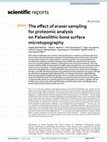
Scientific Reports, 2021
Bone surface modifications are crucial for understanding human subsistence and dietary behaviour,... more Bone surface modifications are crucial for understanding human subsistence and dietary behaviour, and can inform about the techniques employed in the production and use of bone tools. Permission to destructively sample such unique artefacts is not always granted. The recent development of non-destructive proteomic extraction techniques has provided some alternatives for the analysis of rare and culturally significant artefacts, including bone tools and personal ornaments. The Eraser Extraction Method (EEM), first developed for ZooMS analysis of parchment, has recently been applied to bone and ivory specimens. To test the potential impact of the EEM on ancient bone surfaces, we analyse six anthropogenically modified Palaeolithic bone specimens from Bacho Kiro Cave (Bulgaria) through a controlled sampling experiment using qualitative and 3D quantitative microscopy. Although the overall bone topography is generally preserved, our findings demonstrate a slight flattening of the microtop...
Scientific Reports, 2021
Evidence of mobiliary art and body augmentation are associated with the cultural innovations intr... more Evidence of mobiliary art and body augmentation are associated with the cultural innovations introduced by Homo sapiens at the beginning of the Upper Paleolithic. Here, we report the discovery of the oldest known human-modified punctate ornament, a decorated ivory pendant from the Paleolithic layers at Stajnia Cave in Poland. We describe the features of this unique piece, as well as the stratigraphic context and the details of its chronometric dating. The Stajnia Cave plate is a personal 'jewellery' object that was created 41,500 calendar years ago (directly radiocarbon dated). It is the oldest known of its kind in Eurasia and it establishes a new starting date for a tradition directly connected to the spread of modern Homo sapiens in Europe.
Journal of Archaeological Science: Reports, 2021
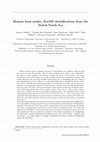
Barbed osseous points originally deposited in Doggerland are regularly collected from the beaches... more Barbed osseous points originally deposited in Doggerland are regularly collected from the beaches of the Netherlands. Many of these barbed points ought to be of Mesolithic age based on their typology, and because of direct 14C dates of six of them. The bones transformed into barbed points are heavily modified during the manufacture process. The points themselves are also often modified again during use, re-sharpening and as a result of post-depositional processes. Hence, it is generally impossible to identify the species of the bone used to manufacture barbed points based on visual inspection. Here, we use mass spectrometry to taxonomically identify the barbed points. We present the ZooMS identifications, 14C ages and δ 13C and δ 15N measurements of nine barbed points from the Dutch shore. Our results demonstrate that Cervus elaphus and/or Alces alces as well as Homo sapiens bones were regularly used for the production of barbed points. The uncalibrated ages of the barbed points ran...

Journal of Human Evolution, 2021
The behavioral dynamics underlying the expansion of Homo sapiens into Europe remains a crucial to... more The behavioral dynamics underlying the expansion of Homo sapiens into Europe remains a crucial topic in human evolution. Owing to poor bone preservation, past studies have strongly focused on the Initial Upper Paleolithic (IUP) stone tool record. Recent excavations and extensive radiocarbon dating at Bacho Kiro Cave (Bulgaria) pushed back the arrival of IUP H. sapiens into Europe to ca. 45,000 years ago. This site has exceptional bone preservation, and we present the study of 7431 faunal remains from across two IUP layers (I and J) and one Middle Paleolithic layer (K). We identified a shift in site use and occupation intensity through time, marked by increased find density and human modifications in Layer I. Alongside a decrease in carnivore presence and seasonality data demonstrating human presence in all seasons, this indicates a more frequent or prolonged occupation of the site by IUP groups. Contrarily, the dietary focus across the IUP and Middle Paleolithic layers is similar, centered on the exploitation of species from a range of habitats including Bos/Bison, Cervidae, Equidae, and Caprinae. While body parts of large herbivores were selectively transported into the site, the bear remains suggest that these animals died in the cave itself. A distinct aspect of the IUP occupation is an increase in carnivore remains with human modifications, including these cave bears but also smaller taxa (e.g., Canis lupus, Vulpes vulpes). This can be correlated with their exploitation for pendants, and potentially for skins and furs. At a broader scale, we identified similarities in subsistence behavior across IUP sites in Europe and western Asia. It appears that the first IUP occupations were less intense with find densities and human modifications increasing in succeeding IUP layers. Moreover, the exploitation of small game appears to be limited across IUP sites, while carnivore exploitation seems a recurrent strategy.
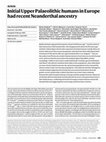
Nature, 2021
Modern humans appeared in Europe by at least 45,000 years ago1–5, but the extent of their interac... more Modern humans appeared in Europe by at least 45,000 years ago1–5, but the extent of their interactions with Neanderthals, who disappeared by about 40,000 years ago6, and their relationship to the broader expansion of modern humans outside Africa are poorly understood. Here we present genome-wide data from three individuals dated to between 45,930 and 42,580 years ago from Bacho Kiro Cave, Bulgaria1,2. They are the earliest Late Pleistocene modern humans known to have been recovered in Europe so far, and were found in association with an Initial Upper Palaeolithic artefact assemblage. Unlike two previously studied individuals of similar ages from Romania7 and Siberia8 who did not contribute detectably to later populations, these individuals are more closely related to present-day and ancient populations in East Asia and the Americas than to later west Eurasian populations. This indicates that they belonged to a modern human migration into Europe that was not previously known from the...

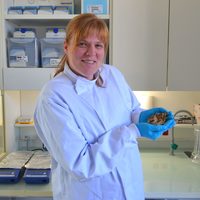





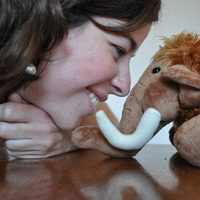


Uploads
Papers by Virginie Sinet-Mathiot